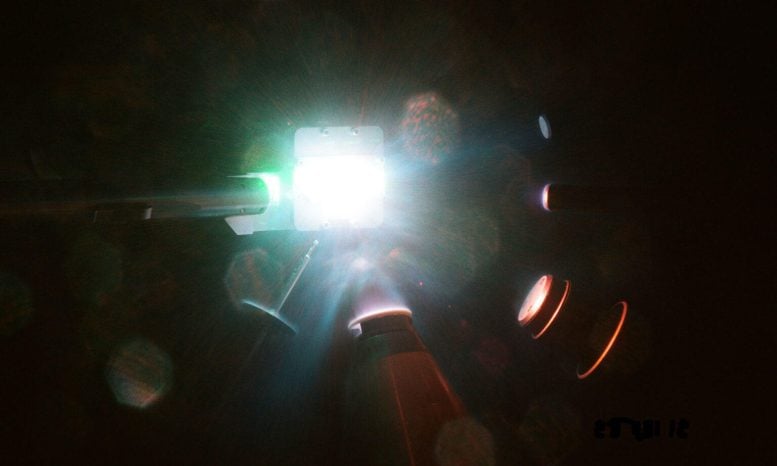
Material on a powder X-ray diffraction image plate is analyzed at the Omega Laser Facility at the University of Rochester’s Laboratory for Laser Energetics. Scientists are developing deep-learning models to analyze the massive amounts of data produced by these experiments. Credit: University of Rochester Laboratory for Laser Energetics photo / Danae Polsin and Gregory Ameele
Deep-learning models developed by scientists are now capable of analyzing the extensive data produced by X-ray diffraction techniques.
Researchers at the University of Rochester say deep learning can supercharge a technique that is already the gold standard for characterizing new materials. Their work, published in npj Computational Materials, details how they created models to more effectively utilize the extensive data generated from X-ray diffraction experiments.
During X-ray diffraction experiments, bright lasers shine on a sample, producing diffracted images that contain important information about the material’s structure and properties. Project lead Niaz Abdolrahim, an associate professor in the Department of Mechanical Engineering and a scientist at the Laboratory for Laser Energetics (LLE), says conventional methods of analyzing these images can be contentious, time-consuming, and often ineffective.
“There is a lot of materials science and physics hidden in each one of these images and terabytes of data are being produced every day at facilities and labs worldwide,” says Abdolrahim. “Developing a good model to analyze this data can really help expedite materials innovation, understand materials at extreme conditions, and develop materials for different technological applications.”
Innovations in High-Energy-Density Experiments
The study, led by Jerardo Salgado ’23 MS (materials science), holds particular promise for high-energy-density experiments like those conducted at LLE by researchers from the Center for Matter at Atomic Pressures. By examining the precise moment when materials under extreme conditions change phases, scientists can discover ways to create new materials and learn about the formation of stars and planets.
Abdolrahim says the project, funded by the US Department of Energy’s National Nuclear Security Administration and the National Science Foundation, improves upon previous attempts to develop machine learning models for X-ray diffraction analysis that were trained and evaluated primarily with synthetic data. Abdolrahim, Associate Professor Chenliang Xu from the Department of Computer Science, and their students incorporated real-world data from experiments with inorganic materials to train their deep-learning models.
More X-ray diffraction analysis experimental data needs to be publicly available to help refine the models, according to Abdolrahim. She says the team is working on creating platforms for others to share data that can help train and evaluate the system, making it even more effective.
Reference: “Automated classification of big X-ray diffraction data using deep learning models” by Jerardo E. Salgado, Samuel Lerman, Zhaotong Du, Chenliang Xu and Niaz Abdolrahim, 4 December 2023, npj Computational Materials.
DOI: 10.1038/s41524-023-01164-8


